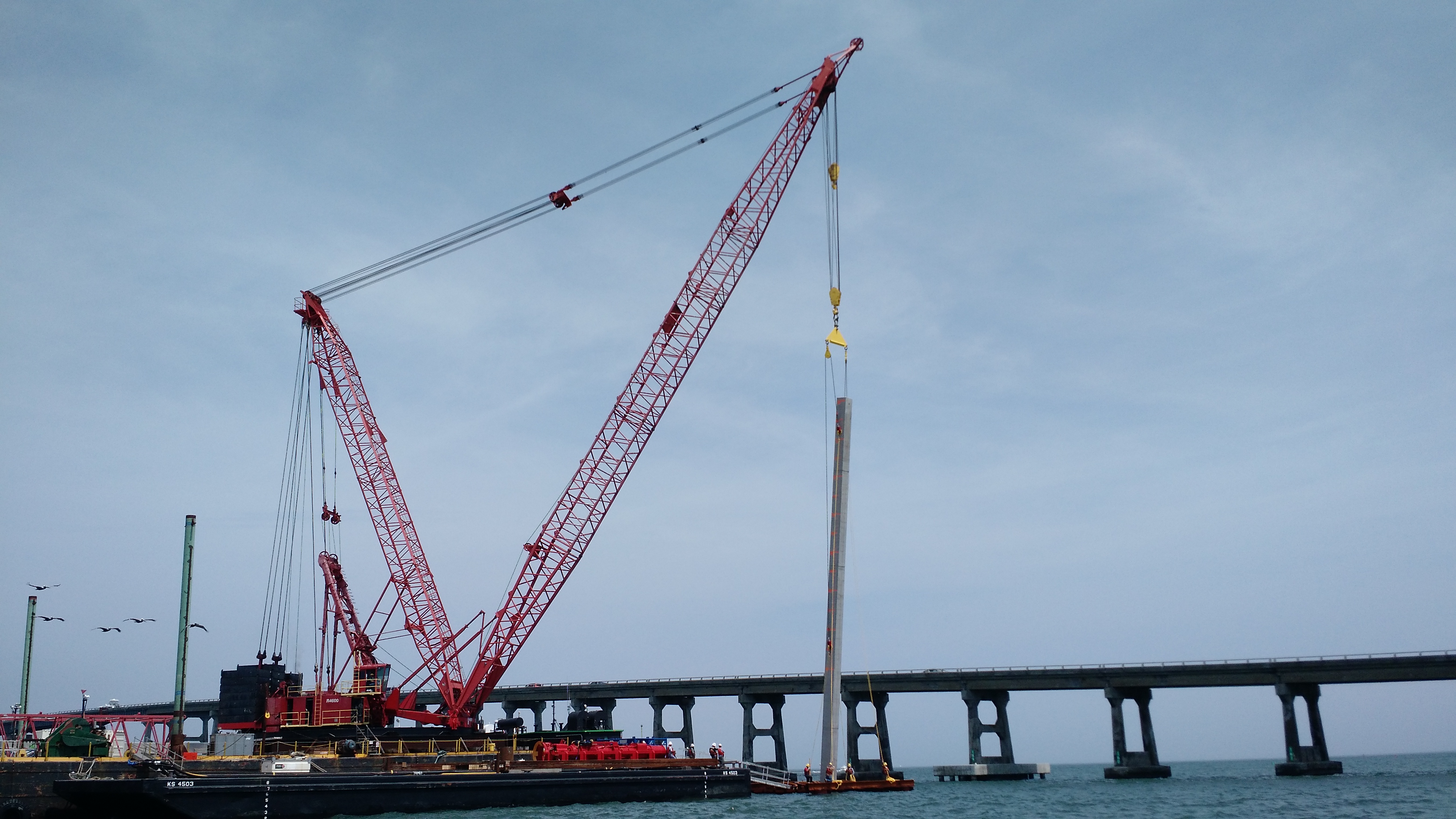The conventional symbol of peace is the olive branch. But on the barrier islands of North Carolina, a 6x6 in concrete foundation pile might be more appropriate.
That’s because on May 9, crews from PCL Civil Constructors, Inc., drove the first of 673 foundation piles for the new structure that will replace the Bonner Bridge across Oregon Inlet.
The existing 53-year old, 2.7-mile prestressed concrete girder structure was for more than a decade the flashpoint of controversy between local residents on tourism-dependent Hatteras Island, who wanted to retain their sole highway link to the mainland, and a coalition of environmental groups contending that preserving the status quo threatened the island’s delicate ecosystem, much of which is part of a federally managed National Seashore.
Further, the environmental groups argued, is Hatteras Island’s gradual migration toward the mainland, potentially rendering any major onshore infrastructure investment moot in a matter of decades. Washouts and erosion along Route 12 were increasing in frequency, with even a minor storm enough to require yet another emergency rebuilding effort. A hurricane might well sever the island permanently, as happened in 2011 when Hurricane Irene cut a new inlet that isolated Hatteras Island’s residents for several weeks.
Better, they said, to build a 17-mile bridge in Pamlico Sound to bypass the most sensitive areas, but one that would cost at least $1 billion.
Meanwhile, the Bonner Bridge just got older, it’s problems multiplying both above and below the surface of Oregon Inlet. Scour from the inlet’s powerful currents became a persistent safety concern, with a 2013 incident forcing a two-week shutdown of the bridge in 2013. The cost of its replacement grew as well, with the original $215.8 million design-build project awarded to PCL and HDR Engineering in 2011 now estimated to cost $246 million, according to the North Carolina Department of Transportation (NCDOT).
The battle lurched from one court injunction to another until last summer, when NCDOT and the coalition reached a compromise. NCDOT agreed to pursue new options for mitigating some of the Island’s most troublesome erosion areas, including a “jug handle” structure near the village of Rodanthe that would bypass the most highly vulnerable areas. In return, the environmental groups dropped their lawsuit against the Bonner Bridge replacement.
It will be Fall 2018 before the current Bonner Bridge can finally stand down and undergo demolition. In the interim, more 110- to 130- ft pilings will be added from the middle of the Inlet back toward the shores, creating a foundation for a structure bridges not just a couple of windswept barrier islands, but also two differing perspectives about what’s best for their future.


Post a comment to this article
Report Abusive Comment